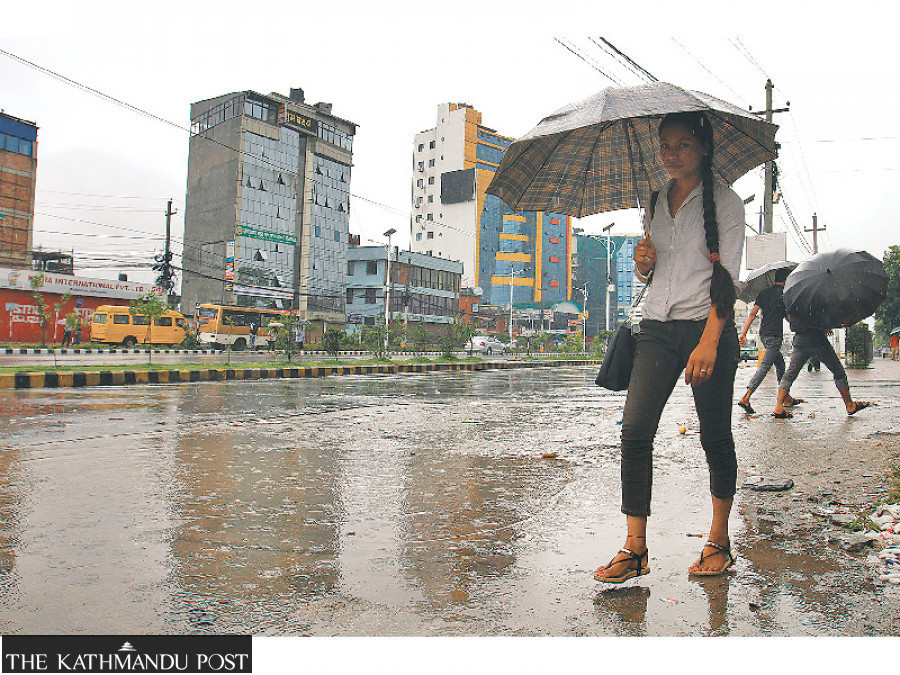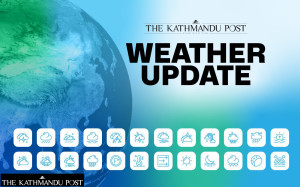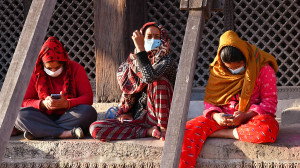Weather
Moderate to heavy rainfall likely until Saturday, farmers advised to delay rice harvest
Cyclone ‘Montha’ in Bay of Bengal to cause rainfall in Koshi, Madhesh and Bagmati provinces and low pressure system in the Arabian Sea to trigger rain in Sudurpaschim, Karnali and Lumbini provinces.
Post Report
Two weather systems–a cyclone formed in the Bay of Bengal and a low-pressure area in the Arabian Sea–are likely to bring medium to heavy rainfall until the end of this week in many parts of Nepal.
According to the post-monsoon special bulletin issued by the Meteorological Forecasting Division under the Department of Hydrology and Meteorology, westerly winds and the low pressure system in the Arabian sea will cause light to moderate rainfall from Monday night to Wednesday morning in Gandaki, Lumbini, few places of Karnali province, and hilly regions of other provinces.
High hills and mountainous areas will witness light to moderate rainfall and snowfall, and a few mountainous areas in Gandaki province could witness heavy rain and snowfall.
“We urge the general public and agencies concerned to take precautions, as possible snow and rainfall could affect daily life, mountaineering, tourism and the agriculture sector,” reads the bulletin.
The division has also issued orange and yellow weather alerts in several districts.
“Those who are already trekking in mountainous areas and farmers preparing to harvest rice crops should take extra precautions,” said David Dhakal, a meteorologist at the division.
The met division has not said anything about the looming adverse effects of cyclone ‘Montha’ that formed in Bay of Bengal and is moving towards northeast India.
Met experts in Nepal warn of possible landslides in eastern Nepal and advise farmers to delay rice harvests to prevent crop damage from rain most likely to occur from Thursday to Saturday.
“Chances of medium to heavy rainfall due to the cyclone in the Bay of Bengal is high from Thursday to Saturday in Koshi, Madhesh and Bagmati provinces,” said Madan Sigdel, associate professor at the Central Department of Hydrology and Meteorology under the Tribhuvan University. “Commuters, trekkers, those planning for mountaineering must take weather warnings seriously. Farmers should postpone crop harvesting until Saturday.”
While cyclonic activity is common during the post-monsoon season, extended periods of medium to heavy rain are unusual, experts say. Met officials attribute the expected rainfall to moisture-laden winds from the Arabian Sea entering the country. The Kathmandu Valley will remain mostly cloudy, with a chance of brief drizzles in a few places.
This year the monsoon entered the country on May 29, two weeks before the usual onset date of June 13, and withdrew on October 10. Normally, the monsoon withdraws from Nepal on October 2. However, the withdrawal date has been extended for the last several years. Last year, the monsoon retreated on October 12.
Nepal is one of the world’s most vulnerable countries to the climate crisis and has witnessed extreme weather events over the past decade and a half. The weather has turned more unusual and destructive in the past couple of years.
Evidence suggests that the maximum temperature in Nepal is rising at a faster rate (0.056 degrees Celsius per year) than the global average of 0.03 degrees Celsius per year.
Experts say extreme weather events—excess rainfall in a short period, continuous rains for several days after the monsoon, dry spells, droughts, below-average precipitation, and above-normal winter temperatures—have become more frequent in recent years.
Despite the early onset of the monsoon, many places, especially the plains of the Tarai, which is also the food basket of the country, witnessed mid-monsoon droughts, which prevented farmers from cultivating their land. The government had declared Madhesh a crisis zone.
Scores of studies and scientific analyses over the decade and, more recently, the IPCC report, have warned that since Nepal is one of the most vulnerable countries to the climate crisis, business-as-usual approach isn’t sufficient to tackle the impacts of the disasters.




 15.12°C Kathmandu
15.12°C Kathmandu



%20(1).jpg&w=300&height=200)

